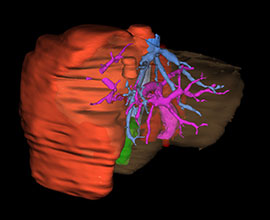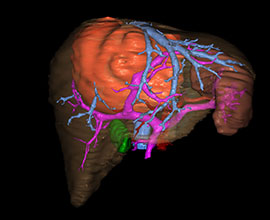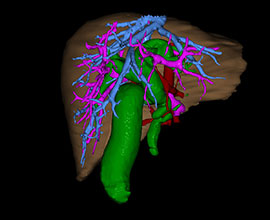The typical cases in this platform collected from global medical centers include digital liver models for rare variation of normal liver anatomy and common diseases, such as adult liver tumor, pediatric liver tumor, pancreatic lesion, splenic lesion, biliaxy lesion, hepatic vascular diseases as well as some rare liver diseases (Siamese twins, liver trauma, physical and chemical toxicity liver injury, post- transplant liver etc.), which provides a platform to further understand liver diseases and exhibit the achievement in exploring liver diseases.
The platform updates the digital liver models of typical cases regularly and are open to the public for free, providing learning resources for medical worker. The specific digital liver models can be got by setting corresponding retrieved conditions and provide effective support for clinic and scientific research.
 Adult Liver Tumors
Adult Liver Tumors Pediatric Liver Tumors
Pediatric Liver Tumors Congenital Biliary Dilatation
Congenital Biliary Dilatation Pancreatic Cancer
Pancreatic Cancer Portal Hypertension
Portal Hypertension The Spleen Disease
The Spleen Disease